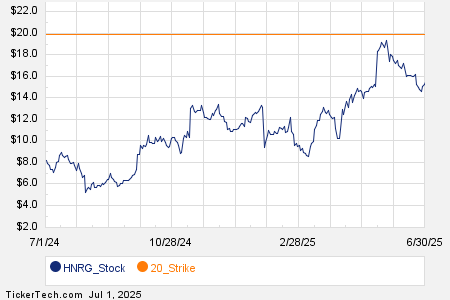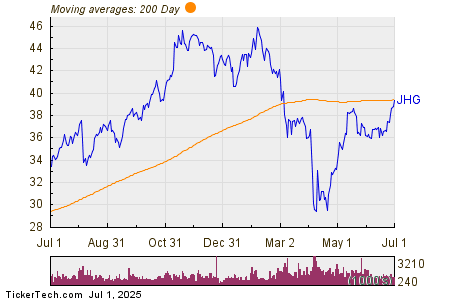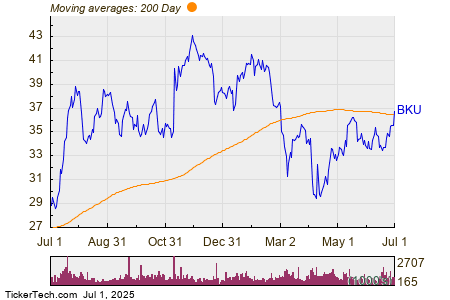Riot Platforms stock (NASDAQ: RIOT), a Bitcoin mining company, trades at $11 per share, about 86% below its peak level of $78 seen in January 2021. RIOT stock was trading at around $4 in early June 2022, just before the Fed started increasing rates, and is now 160% above that level, compared to a 40% gain for the S&P 500 during this period. Our detailed analysis of Riot Platforms’ upside post-inflation shock captures trends in the company’s stock during the turbulent market conditions seen over 2022. It compares these trends to the stock’s performance during the 2008 recession.
Riot Platforms has seen its stock rise over 15% in the last five days. The company posted a solid Q1 earlier this month, with profits of $212 million or $0.81 per share, significantly better than the consensus estimate of $(0.14). But looking at a slightly longer term, RIOT stock has faced a notable decline of 25% from levels of $15 in early January 2021 to around $11 now, vs. an increase of about 40% for the S&P 500 over this roughly three-year period. However, the decrease in RIOT stock has been far from consistent. Returns for the stock were 31% in 2021, -85% in 2022, and 356% in 2023. In comparison, returns for the S&P 500 have been 27% in 2021, -19% in 2022, and 24% in 2023 — indicating that RIOT underperformed the S&P in 2022.
In fact, consistently beating the S&P 500 — in good times and bad — has been difficult over recent years for individual stocks; for heavyweights in the Health Care sector including LLY, UNH, and JNJ, and even for the megacap stars GOOG, TSLA, and MSFT. In contrast, the Trefis High Quality (HQ) Portfolio, with a collection of 30 stocks, has outperformed the S&P 500 each year over the same period. Why is that? As a group, HQ Portfolio stocks provided better returns with less risk versus the benchmark index; less of a roller-coaster ride, as evident in HQ Portfolio performance metrics.
Given the current uncertain macroeconomic environment with high oil prices and elevated interest rates, could RIOT face a similar situation as it did in 2022 and underperform the S&P over the next 12 months — or will it see a recovery? The $18 average of analysts’ price estimates reflects over 60% upside from the current market price of $11. The higher price target accounts for the company’s solid balance sheet, with a very low 0.7% debt as a percentage of equity and a very high 50% cash and investments as a percentage of assets. Furthermore, the company has set a target of increasing hash rate capacity (the number of cryptographic hashing algorithms solved per second) from 12.4 EH/s in Q1 2024 to 31.5 EH/s by the end of the year and 100 EH/s by 2027. This would imply a significant revenue and profit growth. In fact, sales are estimated to triple from $281 million in 2023 to $885 million in 2025, per the consensus estimates. As such, RIOT stock could see much higher levels over time.

Timeline of Inflation Shock So Far:
- 2020 – early 2021: Increase in money supply to cushion the impact of lockdowns led to high demand for goods; producers unable to match up.
- Early 2021: Shipping snarls and worker shortages from the coronavirus pandemic continue to hurt supply.
- April 2021: Inflation rates cross 4% and increase rapidly.
- Early 2022: Energy and food prices spike due to the Russian invasion of Ukraine. Fed begins its rate hike process.
- June 2022: Inflation levels peak at 9% – the highest level in 40 years. The S&P 500 index declined more than 20% from peak levels.
- July – September 2022: Fed hikes interest rates aggressively – resulting in an initial recovery in the S&P 500 followed by another sharp decline.
-
October 2022 – July 2023: Fed continues rate hike process; improving market sentiments helps S&P500 recoup some of its losses.
- Since August 2023: Fed has kept interest rates unchanged to quell fears of a recession, and it is prepared for rate cuts in 2024.
In contrast, here’s how RIOT stock and the broader market performed during the 2007/2008 crisis.
Timeline of 2007-08 Crisis
- 10/1/2007: Approximate pre-crisis peak in S&P 500 index
- 9/1/2008 – 10/1/2008: Accelerated market decline corresponding to Lehman bankruptcy filing (9/15/08)
- 3/1/2009: Approximate bottoming out of S&P 500 index
- 12/31/2009: Initial recovery to levels before accelerated decline (around 9/1/2008)
Riot Platforms and S&P 500 Performance During 2007-08 Crisis
RIOT stock declined from $485 in September 2007, the pre-crisis peak, to $66 in March 2009, as the markets bottomed out, implying it lost 86% of its pre-crisis value. It recovered to $84 in early 2010, reflecting a 26% growth between March 2009 and January 2010. The S&P 500 Index saw a decline of 51%, falling from levels of 1,540 in September 2007 to 757 in March 2009. It then rallied 48% between March 2009 and January 2010 to reach levels of 1,124.
Riot Platforms Fundamentals Over Recent Years
Riot Platforms’ revenue increased from $12.1 million in 2020 to $281 million in 2023, led by an uptick in its hash rate capacity from 0.57 EH/s to 12.4 EH/s over this period. Riot Platforms’ loss per share stood at $0.28 in 2023, versus a loss per share of $0.34 in 2020.
Does Riot Platforms Have A Sufficient Cash Cushion To Meet Its Obligations Through The Ongoing Inflation Shock?
As mentioned above, Riot Platforms has a solid balance sheet with minimal debt and a large amount of cash and investments. We think the company is in a solid position to meet its near-term obligations.
Conclusion
With the Fed’s efforts to tame runaway inflation rates helping market sentiments, we believe RIOT stock has the potential for significant gains once fears of a potential recession are allayed. With its top-line is expected to benefit from the potential increase in the hash rate, it is likely that RIOT stock sees much higher levels from here. That said, investors must take into account the risks associated with RIOT stock, primarily the halving of Bitcoin mining rewards last month.
While RIOT stock looks like it can see higher levels, it is helpful to see how Riot Platforms’ Peers fare on metrics that matter. You will find other valuable comparisons for companies across industries at Peer Comparisons.
| Returns | May 2024 MTD [1] |
2024 YTD [1] |
2017-24 Total [2] |
| RIOT Return | 8% | -29% | 185% |
| S&P 500 Return | 5% | 11% | 137% |
| Trefis Reinforced Value Portfolio | 7% | 7% | 657% |
[1] Returns as of 5/21/2024
[2] Cumulative total returns since the end of 2016
Invest with Trefis Market-Beating Portfolios
See all Trefis Price Estimates
The views and opinions expressed herein are the views and opinions of the author and do not necessarily reflect those of Nasdaq, Inc.








